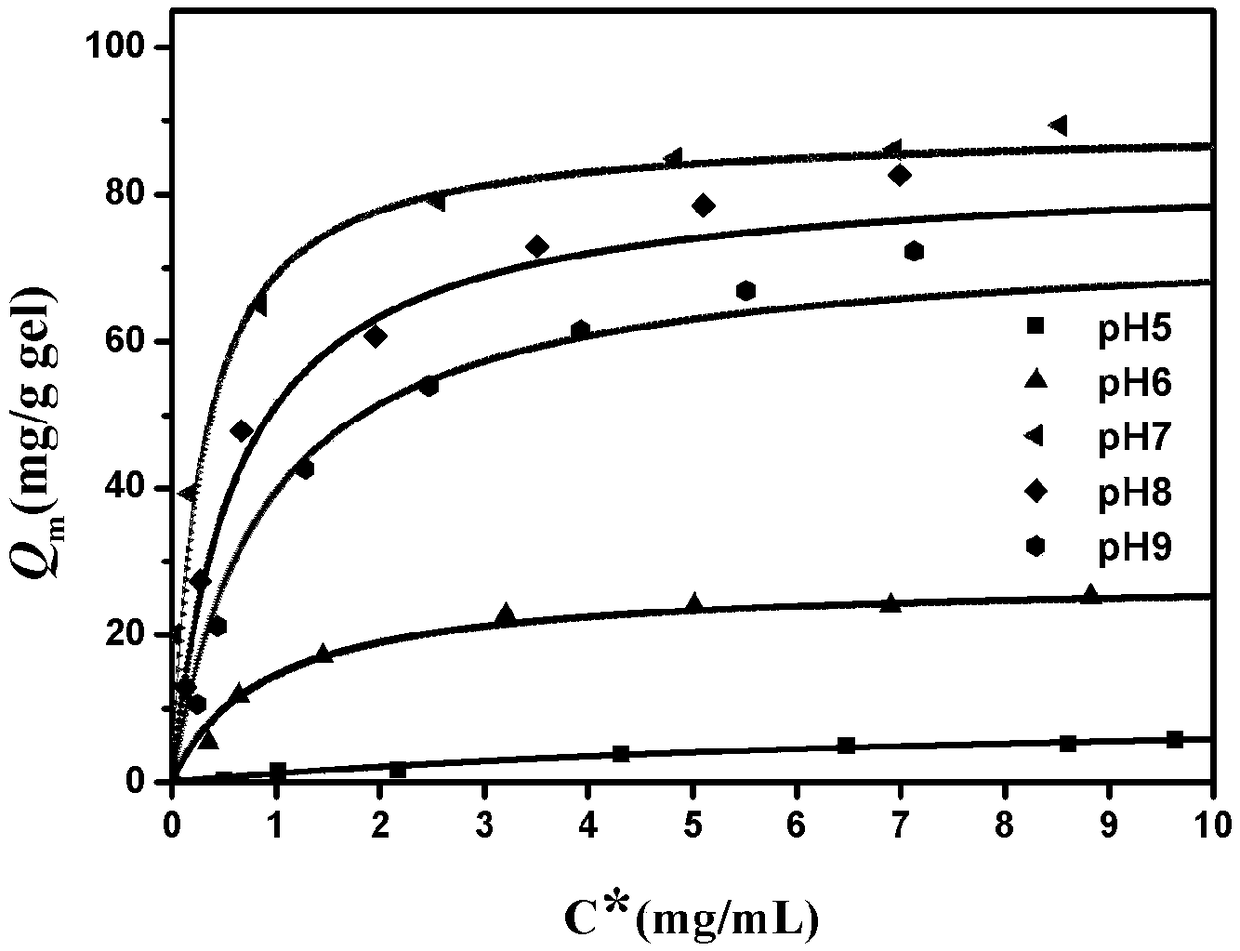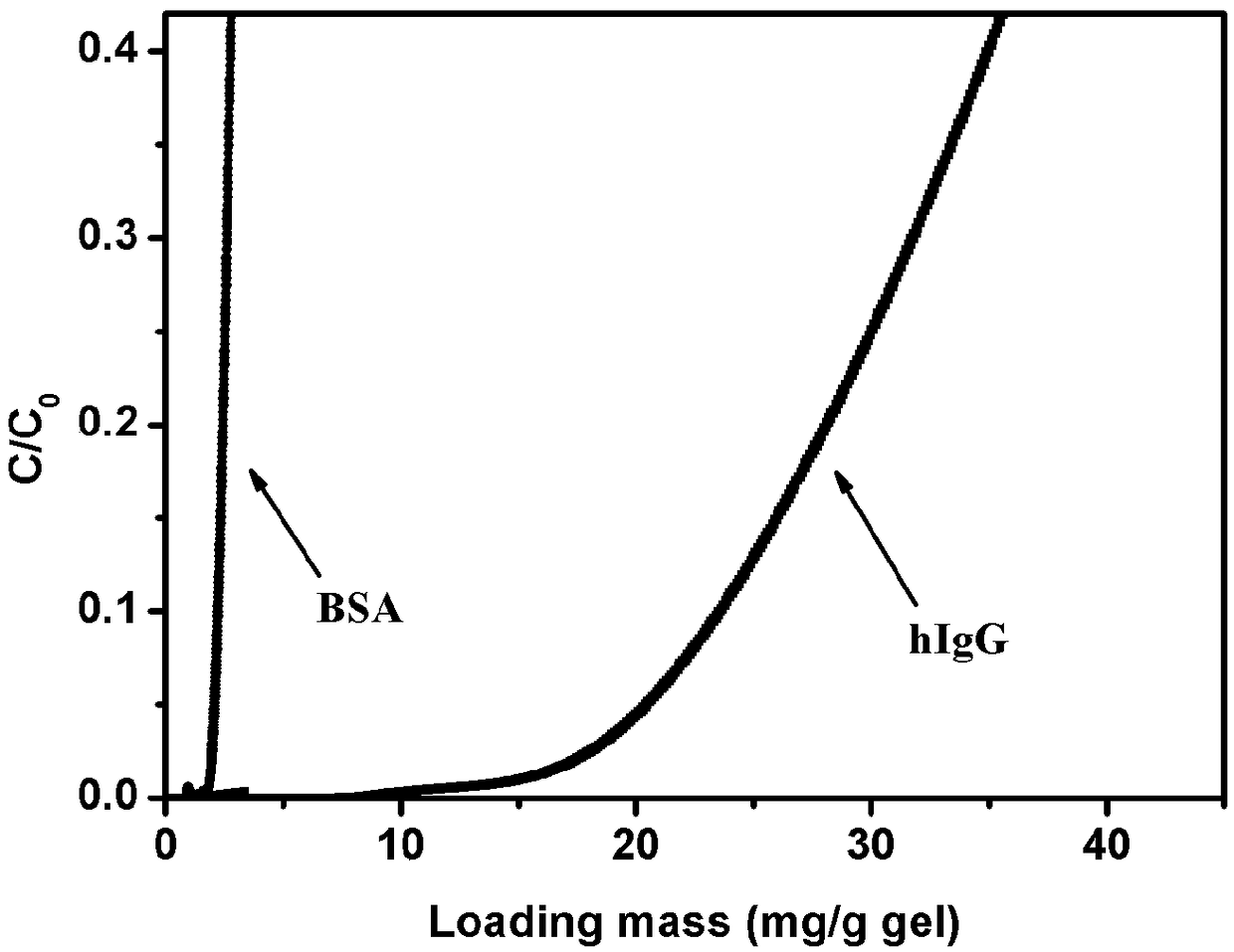Tetrapeptide chromatography medium taking phenylalanine-tyrosine-histidine-glutamic acid as functional ligand, and application of tetrapeptide chromatography medium
A phenylalanine and chromatographic medium technology, applied in protein chromatographic separation technology, tetrapeptide chromatographic medium and antibody separation application fields, can solve the problems of weak salt-tolerant binding ability, low dynamic antibody loading, etc., to avoid The effect of antibody aggregation, high affinity, and large adsorption capacity
- Summary
- Abstract
- Description
- Claims
- Application Information
AI Technical Summary
Problems solved by technology
Method used
Image
Examples
Embodiment 1
[0042] Example 1: Preparation of Tetrapeptide Affinity Chromatography Medium
[0043]The process of preparing tetrapeptide chromatography medium with agarose gel as matrix mainly includes four steps: matrix activation, bromoalcoholation, spacer coupling and ligand coupling. (1) Matrix activation: Take 10 g of drained agarose gel, add 10 mL of 20% (v / v) dimethyl sulfoxide solution, 10 mL of allyl bromide and 5 g of sodium hydroxide, activate in a shaker at 180 rpm at 30 °C After 36 hours, filter with suction and wash with deionized water to obtain the activated matrix; (2) bromoalcoholization: the activated matrix and 5g N-bromosuccinimide are mixed for bromoalcoholation, and placed in a 180rpm shaker at 30°C React for 1 hour, filter with suction, and wash with deionized water to obtain the brominated matrix; (3) space arm coupling: mix the brominated matrix with 3 mL of hexamethylenediamine and 1M sodium carbonate buffer (pH 12), and React in a shaker at 180rpm for 24 hours t...
Embodiment 2
[0044] Example 2: Preparation of Tetrapeptide Affinity Chromatography Medium
[0045] The process of preparing tetrapeptide chromatography medium with cellulose microspheres as matrix mainly includes four steps: matrix activation, bromoalcoholation, spacer coupling and ligand coupling. (1) Matrix activation: take 10 g of cellulose microspheres, add 10 mL of 20% (v / v) dimethyl sulfoxide solution, 10 mL of allyl bromide and 5 g of sodium hydroxide, and activate in a shaker at 180 rpm at 35 °C For 48 hours, filter with suction and wash with deionized water to obtain the activated matrix; (2) bromoalcoholization: the activated matrix and 5g N-bromosuccinimide are mixed for bromoalcoholization, and placed in a 180rpm shaker at 30°C React for 1 hour, filter with suction, and wash with deionized water to obtain the brominated matrix; (3) space arm coupling: mix the brominated matrix with 3 mL of hexamethylenediamine and 1M sodium carbonate buffer (pH 12), and React in a shaker at 18...
Embodiment 3
[0046] Example 3: Preparation of Tetrapeptide Affinity Chromatography Medium
[0047] The process of preparing tetrapeptide chromatography medium with polymethacrylate microspheres as matrix mainly includes four steps: matrix activation, bromoalcoholation, spacer coupling and ligand coupling. (1) Matrix activation: Take 10 g of drained agarose gel, add 10 mL of 20% (v / v) dimethyl sulfoxide solution, 10 mL of allyl bromide and 5 g of sodium hydroxide, and activate it in a shaker at 180 rpm at 30 °C for 30 Hours, suction filtration, wash with deionized water, obtain activated matrix; (2) bromoalcoholization: activate matrix, 5g N-bromosuccinimide are mixed and carry out bromoalcoholation, react in 180rpm shaker under 30 ℃ For 1 hour, filter with suction and wash with deionized water to obtain the brominated matrix; (3) space arm coupling: mix the brominated matrix with 3 mL of hexamethylenediamine and 1M sodium carbonate buffer (pH12), shake at 180 rpm at 30°C React in bed for ...
PUM
| Property | Measurement | Unit |
|---|---|---|
| Dissociation constant | aaaaa | aaaaa |
Abstract
Description
Claims
Application Information
 Login to View More
Login to View More - R&D
- Intellectual Property
- Life Sciences
- Materials
- Tech Scout
- Unparalleled Data Quality
- Higher Quality Content
- 60% Fewer Hallucinations
Browse by: Latest US Patents, China's latest patents, Technical Efficacy Thesaurus, Application Domain, Technology Topic, Popular Technical Reports.
© 2025 PatSnap. All rights reserved.Legal|Privacy policy|Modern Slavery Act Transparency Statement|Sitemap|About US| Contact US: help@patsnap.com



